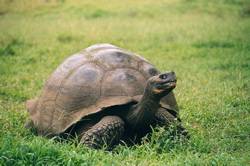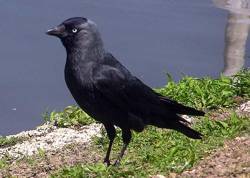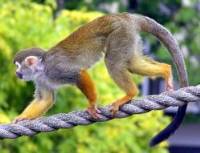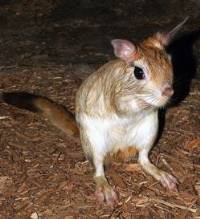On the Origins of New Forms of Life
5.5: Prevalence of Animal Hybrids
(Continued from the previous page)
It is widely supposed that animal hybrids are less common, or are more sterile than hybrids produced by plants. For this reason, hybridization has been deemed less important in the evolution of animals than in that of plants. Among evolutionary biologists studying animals, the main interest of hybridization seems to have been with regard to processes that produce reproductive barriers preventing hybridization ("reproductive isolation"), not ones producing new forms of life directly from animal hybrids. Interest in processes that produce new forms through hybridization has been much more in evidence among botanists.
If animal hybrids actually were rarer than plant hybrids, then stabilization processes, due to their strong connection to hybridization, would be less significant among animals than among plants. But there does not seem to be any great difference between the two categories with respect to rates of hybridization.
Those claiming animal hybrids do not play an important role in evolution list sterile or inviable animal hybrids as evidence that interbreeding does not occur. But it is also possible to compile long lists of plant hybrids that are sterile and/or inviable. The fact that many plant hybrids are sterile was established by formal scientific studies as early as the eighteenth century.
It is sometimes claimed that animal hybrids should somehow be more frequently sterile than plant hybrids simply because X-Y (or W-Z) sex determination characterizes animals but not plants. But this assertion can be dismissed for two reasons. First, in certain categories of animals sex chromosomes are not well differentiated. Such is the case, for example, among lizards as well as a wide variety of invertebrates. In fact, it is now recognized that the "dominant Y" system of sex determination characteristic of mammals is only one among a wide variety of sex-determining mechanisms in animals. Even among mammals, not all have the dominant Y system. Second, the data refute it: Many animal hybrids between forms treated as species are, in fact, known to be partially fertile (see Section 2). Indeed, such hybrids are common among birds and mammals (McCarthy 2006; McCarthy, in prep.).
Knowledge of animal hybrids is certainly less advanced than in plants, probably, at least in part, because plants are far easier than animals to cultivate and breed. With the exception of certain invertebrates and fish, fertilization by artificial means is far more difficult in animals, which means that hybridization experiments are usually much harder to carry out. However, this relative deficit in our knowledge concerning the fertility of animal hybrids should not lead us to the conclusion that they are more sterile than plant hybrids.
In fact, available information suggests the majority of animal hybrids are partially fertile. In my own survey of hybridization in birds (McCarthy 2006), I found that, for those avian crosses for which information on fertility is available, the ratio of crosses producing partially fertile hybrids to those producing highly sterile ones is about six to one. In the survey of mammalian hybrids I am currently conducting, I also find partially fertile hybrids are common.
Another objection, sometimes raised, is that animals are less likely than plants to cross with individuals not of their own kind, because they consciously choose a mate. Let it first be said this objection often is not even relevant since many animals — in particular many fishes, amphibians, and invertebrates — release their gametes into water, where they can easily mix with the gametes of other types of organisms. An abundant array of animal forms reproduce in this way and a wide variety of naturally occurring freshwater and marine animal hybrids are known.
Moreover, it is well known that animals may become confused when it comes to choice of mate. Early in life many types of animals, particularly those providing parental care to their young, such as most kinds of mammals and birds, pass through a brief receptive period during which external stimuli determine their future choice of mate. For example, when nanny goats raise lambs, or ewes, kids, the cross-fostered males prefer to mate with females of the same type as their foster mother.
 Giant Tortoise
Giant TortoiseGeochelone nigra
 Jackdaw
JackdawCorvus monedula
The psychological process creating this sexual preference is known as imprinting. Certain characteristics become established at that time that will later elicit courting and mating in the adult. Most birds will readily imprint on whatever bird raises them. In fact, early exposure can cause a nestling to imprint even on a non-bird or an inanimate object. Thus, Ardrey (1969) describes a case of a peacock raised in a reptile house at the Vienna Zoo imprinting on a giant tortoise. It followed the tortoise everywhere. "And," as Ardrey says (p. 125),
Konrad Lorenz (1952, 1972: vol. I) studied this phenomenon in a variety of birds. One of his jackdaws treated him as if he were its mate. Lorenz also had a goose and rooster that were attracted to each other and not to individuals of their own kind. He had ducklings that followed him wherever he went. By exposing newly hatched geese to a beach ball, he convinced them forever afterward that the ball was their mother.
In captivity, animals commonly adopt young not of their own kind, which usually results in the young imprinting on the fostering type. However, some types of animals are much more willing to play the role of foster parent than are others. Breeders regularly resort to fostering in the case of certain hybrid crosses in which the biological parents tend to abandon their young. Birds commonly used for this purpose are the Bengalese (Lonchura domesticus) and the domestic canary (Serinus domesticus).
Such adoptions are apparently fairly common, too, in a natural setting. A variety of reports are on record. For example, Briehagen (1984) reports a Dunlin (Calidris alpina) adopting the brood of a Temminck’s Stint (C. temminckii). Beardslee and Mitchell (1965) report a case of a Prothonotary Warbler (Protonotaria citrea) singing the song of the Yellow Warbler (Dendroica petechia) and tending Yellow Warbler young. Mixed broods often occur, too, when one bird lays eggs in the nest of another.
Some reports are surprising. For example, the writer knows of a case in which a female Dobermann Pinscher raised a pig, and another in which a puma-leopard hybrid (Felis concolor Felis concolor x Panthera pardus) was fostered on a Fox Terrier. When adult, the pig spent all its time with dogs instead of other pigs, and behaved in many ways like a dog. For example, it would leap up on visitors and attempt to bark at strangers. Also bizarre is an account that appeared in The Ibis, a prominent ornithological journal, in which a captive female Golden Eagle (Aquila chrysaetos) hatched and reared three chickens!
 Squirrel Monkey
Squirrel MonkeySaimiri sciureus
 Springhare
SpringharePedetes capensis
Direct fostering is not necessary for imprinting. A male bird may learn an “incorrect” song by hearing it from a bird singing near the nest and later sing that song and attract a mate not of his own kind. For example, Lemaire (1977) showed that hybridization resulted when an accident of early learning had led a Reed Warbler (Acrocephalus scirpaeus) as an adult to sing a song combining elements of Reed Warbler song with those of the Marsh Warbler (A. palustris). Female birds tend to choose mates that sing the songs they were exposed to early in life.
In captivity, animals may be kept without access to mates of their own kind. If some other type of animal is present in the cage, hybridization will often result. Mating can occur even between the most disparate partners. For example, Morris (1970: 502) says a male squirrel monkey (Saimiri sciureus) caged with a female spring-hare (Pedetes capensis), a rodent, repeatedly attempted copulation. With regard to captive doves, long-time aviculturist Arthur Butler (1906: 346) comments that
"Yet," says Butler (ibid), "there are still men so inattentive to what is constantly going on around them, that they persist in dogmatically asserting that no bird or beast willingly intermarries with an alien species."
Mating between forms highly disparate in size are not limited to birds. Male Steller sea-lions (Eumetopias jubatus) are about 10 times as large as female California sea-lions (Zalophus californianus). Yet natural hybrids occur. Most Z. californianus females participating in such matings die of suffocation or of wounds sustained during copulation. The same Eumetopias male killed 12 Zalophus females by lying on them until they died. In such cases, the urge to mate apparently overcomes any tendency that an animal may have to restrict its attention to mates presenting normal cues.
Similarly, in a natural setting, when an animal is on the edge of, or outside, its normal range, it may not meet a mate of its own kind. If some other type of animal is present, hybridization may result. In the case of those types of animals that consciously choose a mate, imprinting and a scarcity of appropriate mates are probably the two main factors giving rise to hybrid populations.
In light of such evidence, from both captivity and the wild — in particular, in light of the large number of natural animal populations documented as having had a hybrid origin — there is certainly no reason to believe animals always refuse to mate with individuals not of their own kind. NEXT PAGE >>